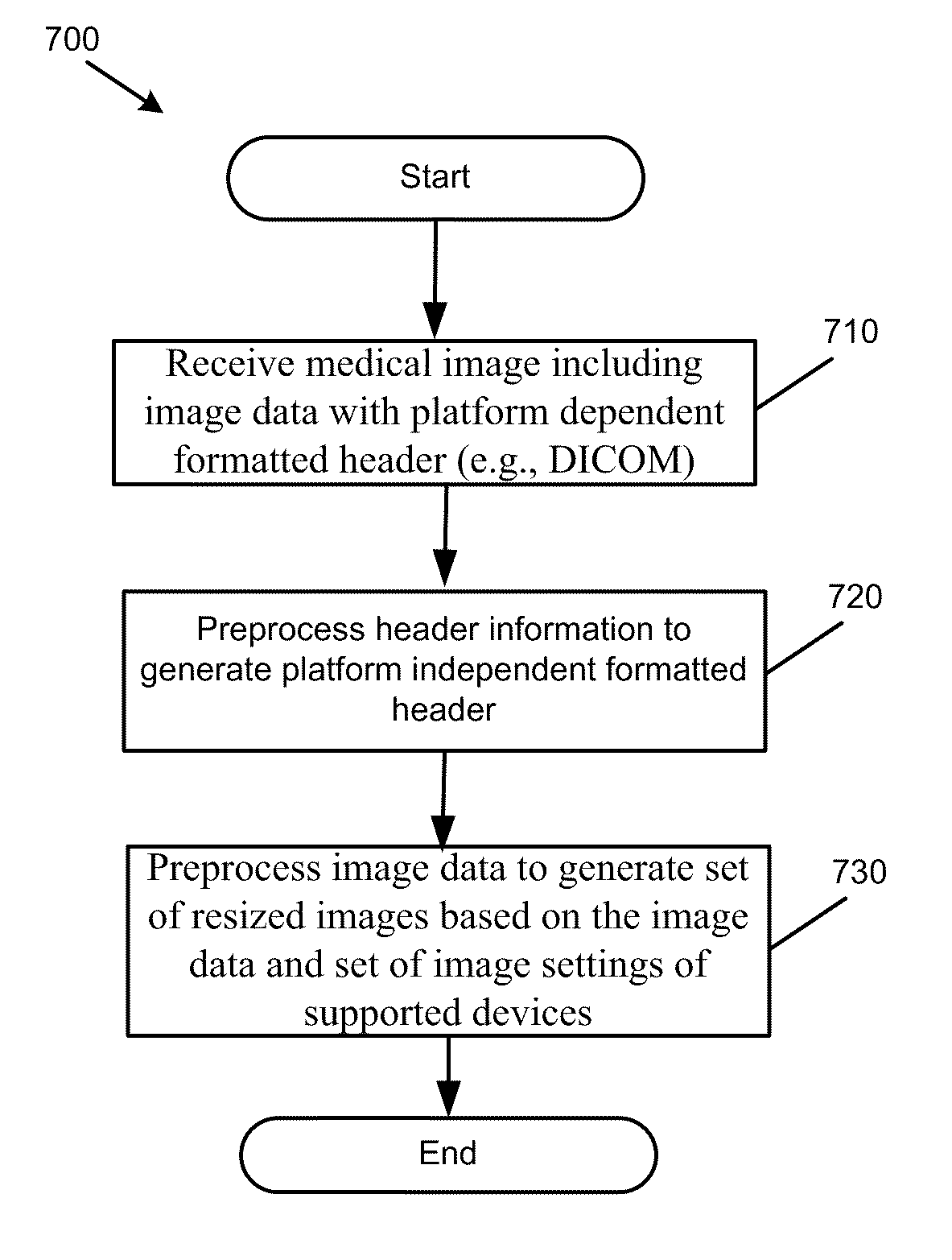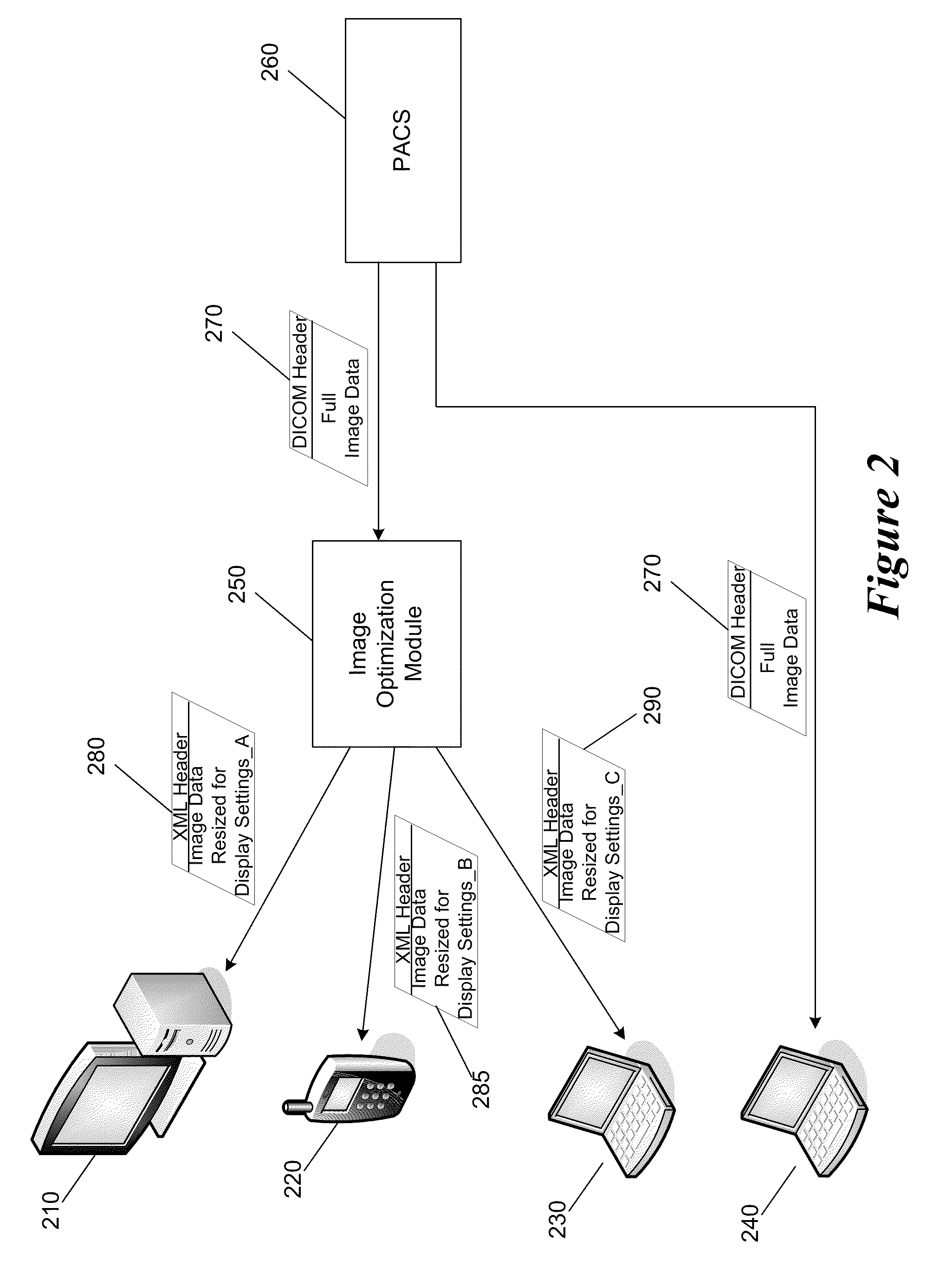PACS Optimization Techniques
a technology of optimization techniques and pacs, applied in the field of health care, can solve the problems of licensing costs for the use of these specialized libraries, and the incompatibility of libraries with software or hardware of many generally available client devices, and achieve the effect of efficient transfer of medical images and efficient transfer of images
- Summary
- Abstract
- Description
- Claims
- Application Information
AI Technical Summary
Benefits of technology
Problems solved by technology
Method used
Image
Examples
Embodiment Construction
[0032]In the following detailed description of the invention, numerous details, examples, and embodiments of the invention are set forth and described. However, it will be clear and apparent to one skilled in the art that the invention is not limited to the embodiments set forth and that the invention may be practiced without some of the specific details and examples discussed.
I. Overview
[0033]Some embodiments provide a method and system for efficiently transferring medical images from an image database, such as a Picture Archiving and Communication Systems (PACS), to one or more different display devices. Some embodiments perform the efficient transfer of the images by optimizing the images before transferring the images to a client device based on specifications of the client device. Some embodiments optimize the images by preprocessing the images as the images are stored to the PACS. Some embodiments optimize the images on-demand as the images are requested by and sent to the cli...
PUM
 Login to View More
Login to View More Abstract
Description
Claims
Application Information
 Login to View More
Login to View More - R&D
- Intellectual Property
- Life Sciences
- Materials
- Tech Scout
- Unparalleled Data Quality
- Higher Quality Content
- 60% Fewer Hallucinations
Browse by: Latest US Patents, China's latest patents, Technical Efficacy Thesaurus, Application Domain, Technology Topic, Popular Technical Reports.
© 2025 PatSnap. All rights reserved.Legal|Privacy policy|Modern Slavery Act Transparency Statement|Sitemap|About US| Contact US: help@patsnap.com



